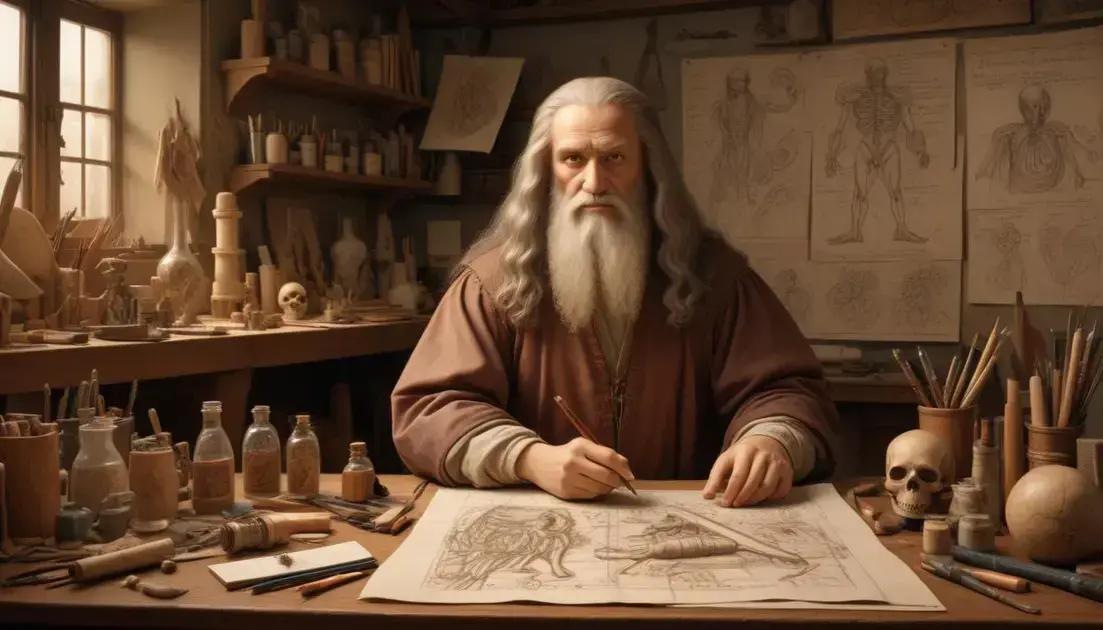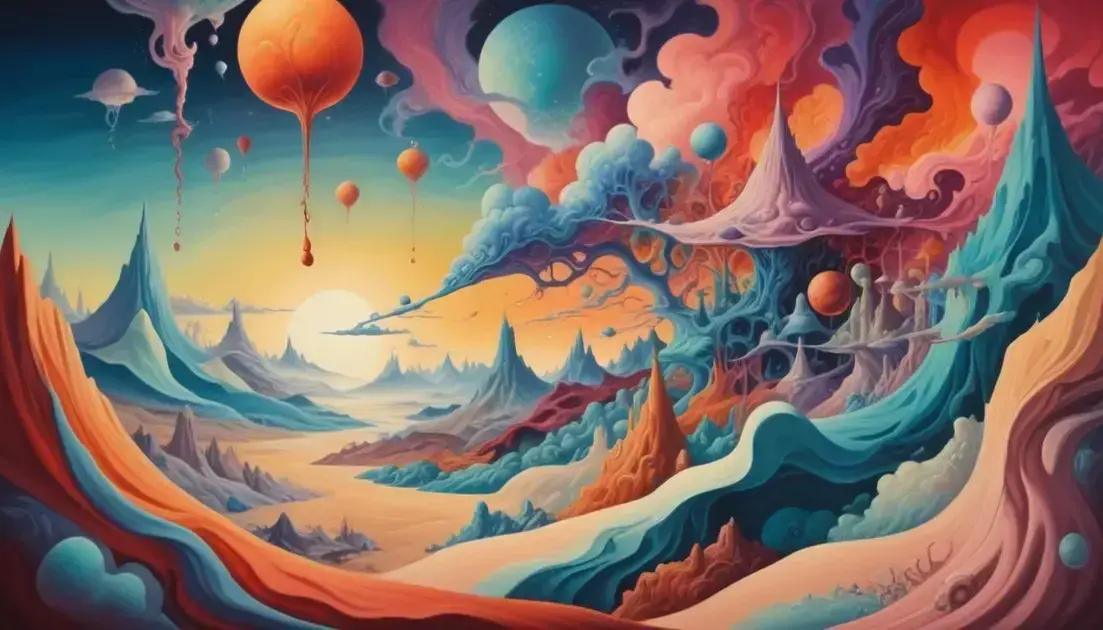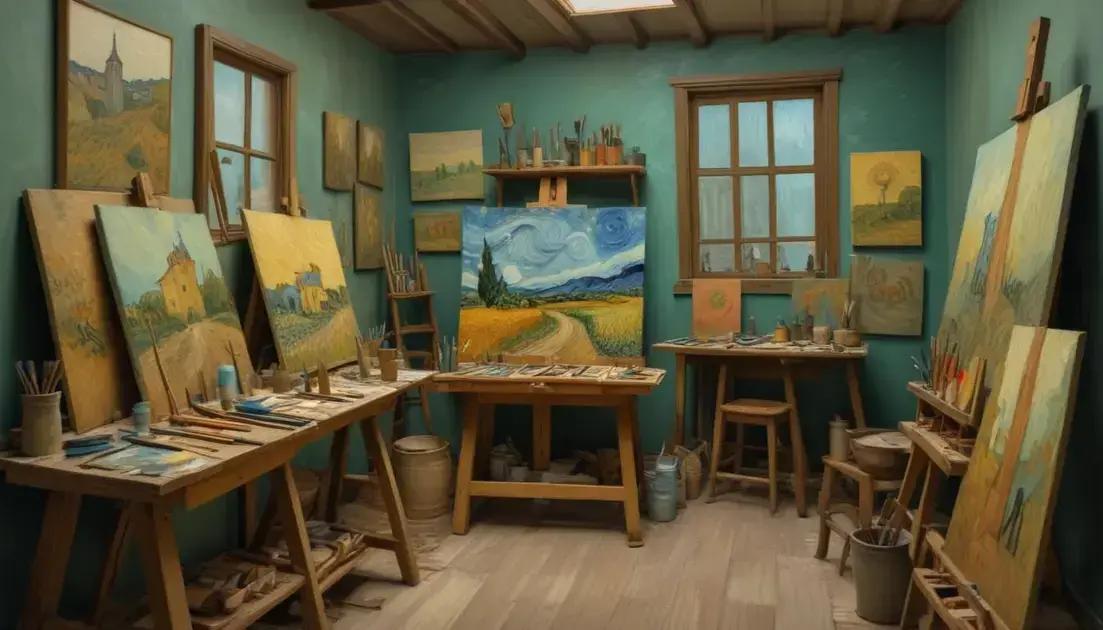
Leonardo da Vinci: The Artist Who Thought Like a Scientist
Leonardo da Vinci was a Renaissance genius known for his unique blend of art and science. His influential works include iconic paintings, detailed anatomical studies, and innovative engineering designs. Da Vinci’s mastery of techniques like chiaroscuro and sfumato enhanced his art, while his explorations of anatomy laid foundations for modern science. His engineering concepts, including designs for flying machines and robots, showcase his visionary thinking. Da Vinci’s lasting legacy continues to inspire artists and scientists, demonstrating the powerful connection between creativity and knowledge.
When we think about Leonardo da Vinci, what comes to mind? Is it his stunning art or his groundbreaking scientific ideas? This Renaissance genius was truly a master of both worlds.
Introduction to Leonardo da Vinci
Leonardo da Vinci was more than just an artist. He was a Renaissance genius who changed how we think about art and science. Born in 1452 in Italy, he painted iconic works like the Mona Lisa and The Last Supper. But did you know he also studied anatomy, botany, and engineering?
His curiosity knew no bounds. Da Vinci kept detailed notebooks filled with sketches of inventions and observations of nature. He often explored how the human body worked, creating stunning anatomical drawings that were ahead of their time.
What made him unique? Da Vinci combined his artistic skills with scientific inquiry. He believed that understanding the world could enhance the beauty of his art. This blend of creativity and analysis is something many admire today.
Leonardo’s ideas were not just limited to painting. He designed flying machines, conceptualized robots and studied the flow of water. Though many of his inventions were never built, they paved the way for future innovations.
Through his work, da Vinci showed us that art and science can go hand in hand. His legacy continues to inspire artists, scientists, and dreamers alike.
His Artistic Techniques
Leonardo da Vinci’s artistic techniques set him apart from other artists of his time. He mastered the use of sfumato, which creates soft transitions between colors. This method helps produce realistic images, making faces look lifelike.
Another technique he used is chiaroscuro. This technique involves using strong contrasts between light and shadow. It adds depth and volume to his paintings.
Da Vinci also was passionate about perspective. He studied how objects appear smaller as they get further away. His understanding of this helped him create stunning landscapes and architectural backgrounds.
His attention to detail is remarkable. In his paintings, you’ll find precise anatomical features and intricate textures. For example, the way he depicted hair and fabric makes them feel real and alive.
Leonardo’s studies of human emotion add another layer to his work. You can often see deep feelings in the eyes and expressions of his subjects. This ability to convey emotion connects viewers to his art in powerful ways.
His techniques don’t just show skill; they reflect his desire to understand the world around him. Da Vinci wanted to capture not just the beauty of the human form but also the essence of life itself.
Exploration of Anatomy
Leonardo da Vinci had a deep fascination with human anatomy. He believed that understanding the body could improve his art. This passion led him to study anatomy in great detail.
Da Vinci conducted dissections of both humans and animals. He used these studies to create detailed drawings of muscles, bones, and organs. His anatomical sketches are incredibly accurate and show his keen observation skills.
One of his famous works is the Vitruvian Man. This drawing demonstrates ideal human proportions based on ancient theories. It combines art and science, showcasing his unique approach to understanding the body.
Leonardo’s investigations went beyond just drawing. He examined how muscles work during movement. This knowledge helped him create more lifelike figures in his art. When you look at his paintings, you see fluid movement and natural poses.
His anatomical insights also laid the groundwork for future scientists. They helped advance the study of human anatomy and how the body functions. Today, many still admire his pioneering work in this field.
Da Vinci’s exploration of anatomy was not only scientific but also artistic. His quest for knowledge shows how interconnected art and science can be. This remains a key part of his enduring legacy.
Engineering Innovations
Leonardo da Vinci wasn’t just an artist; he was also an innovative engineer. His imagination led to many groundbreaking ideas that were way ahead of his time.
One of his most famous concepts was the flying machine. Da Vinci studied birds and their flight patterns. He dreamed of creating a machine that could soar through the sky like them. His sketches show different designs, including a helicopter-like structure and gliders.
He also designed various mechanical devices, such as a robotic knight. This machine could sit, wave, and even move its limbs. It amazed people to think a machine could mimic human actions.
Leonardo explored hydraulics, too. He designed an early version of a water pump. His ideas on water flow helped shape future engineering projects that utilized water as a power source.
In architecture, Leonardo thought about how to construct buildings more effectively. His work included plans for bridges that could span great distances. These ideas were not built in his lifetime but set the stage for future engineers.
Leonardo’s engineering innovations showed his deep understanding of physics and mechanics. He loved to combine art with technology, proving they’re not so different after all.
Legacy and Influence
Leonardo da Vinci’s legacy is huge and spans many fields. His work continues to inspire artists, scientists, and engineers today. His art remains timeless, captivating millions worldwide.
His influence on art is undeniable. Artists study his techniques, especially his use of light and shadow. Many try to capture the same emotion in their work that da Vinci did.
In science, he pushed boundaries. His anatomical studies advanced our understanding of the human body. Medical professionals still reference his drawings as they explore anatomy.
Leonardo’s inventions sparked interest in engineering and technology. Engineers and designers often look back at his ideas for inspiration. Many modern inventions echo his visionary concepts, showcasing his lasting impact.
His notebooks are a treasure trove of knowledge. They contain sketches, observations, and ideas that blend art with science. Scholars study these notebooks to gain insights into his thought process.
Da Vinci’s curiosity led him to explore many disciplines. His approach reminds us of the power of creativity and imagination. Today’s thinkers can learn from his blend of art and science.
Conclusion
In conclusion, Leonardo da Vinci’s work shows us the amazing connection between art and science. His techniques and ideas have shaped how we think about creativity. From his stunning artwork to groundbreaking anatomical studies, his contributions are impressive.
His engineering innovations inspire future generations to think outside the box. Even today, people in various fields look to him for motivation. Da Vinci’s legacy is a reminder that curiosity and imagination can lead to great discoveries.
As we continue to explore art and science, we should embrace his spirit of inquiry. By mixing creativity with knowledge, we can make our own impact, just like Leonardo did. His influence will guide us as we forge new paths in art, science, and beyond.


